June 18, 2025 | 18:12 GMT +7
June 18, 2025 | 18:12 GMT +7
Hotline: 0913.378.918
June 18, 2025 | 18:12 GMT +7
Hotline: 0913.378.918
In recent years, Vietnam has issued numerous policies encouraging the research and application of green materials that save resources and energy and are environmentally friendly. However, the development of green building materials and sustainable construction remains limited.
According to Mr. Nguyen Cuu Loan, Vice Chairman of the Central Vietnam Building Materials Association, the main reason lies in the lack of specific guidelines regarding the procedures and steps for evaluating and certifying energy-saving and eco-friendly building materials. In addition, mandatory regulations related to the assessment and certification of energy performance for construction equipment are still unclear.

Enterprises researching and producing green materials. Photo: Lan Anh.
A significant current barrier is the limited knowledge and experience regarding green building materials. Many investors remain hesitant, partly due to the perception that green construction costs are about 2% higher. Meanwhile, architects struggle to convince investors of the long-term benefits. In reality, incorporating green solutions from the initial design phase does not necessarily increase costs and even reduce investment expenses. Effective green solutions can lead to a return on investment within 2 to 3 years.
“Compared to developed countries, Vietnam’s construction sector, particularly in the central region, remains weak in terms of technology, human resources, and management. No project has yet met Net Zero standards. This poses a major challenge to achieving the goal of net-zero emissions by 2050,” shared Mr. Nguyen Cuu Loan.
Mr. Dang Viet Dung, Chairman of the Vietnam Construction Association, pointed out that the current green building materials market lacks transparency in information and consistency in evaluation standards. Consumers find it difficult to distinguish between genuinely green materials and “greenwashed” products, while manufacturers struggle to demonstrate product quality. As a result, expanding the market remains a significant challenge.
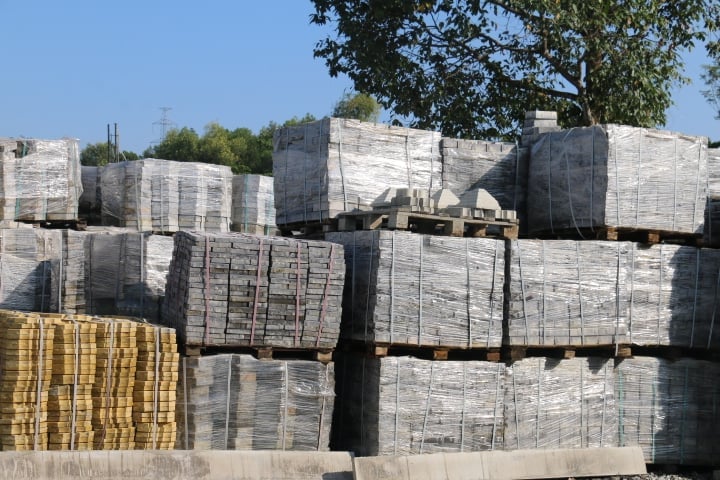
Green materials struggle to find their place in the construction market. Photo: Lan Anh.
“We currently lack regulations aimed at improving the production and use of green materials, as well as sanctions or accountability measures related to environmental protection in the production and use of building materials,” stated Mr. Dang Viet Dung.
In Da Nang, the local government has taken a proactive approach by implementing several policies to promote the development of green materials. Since 2013, 100% of publicly funded construction projects in the city have been required to design, assess, and approve the use of non-fired bricks. The city also encourages the maximum use of non-fired construction materials in all building projects, regardless of funding source or number of floors. As early as 2010, Da Nang eliminated traditional brick kilns, including improved manual kilns, vertical shaft kilns, and ring kilns that used fossil fuels.
According to Mr. Dang Khanh An, Head of the Construction Quality Management Division under Da Nang's Department of Construction, to further enhance the use of green materials in the coming period, the city will continue to promote the development of energy-saving materials and encourage businesses to innovate technology and create materials suited to the local climate.
At the same time, the city recommends that the Ministry of Construction issue a list of certified green and environmentally friendly building materials. This would serve as a guideline for manufacturers, investors, and the public to apply in real construction projects.
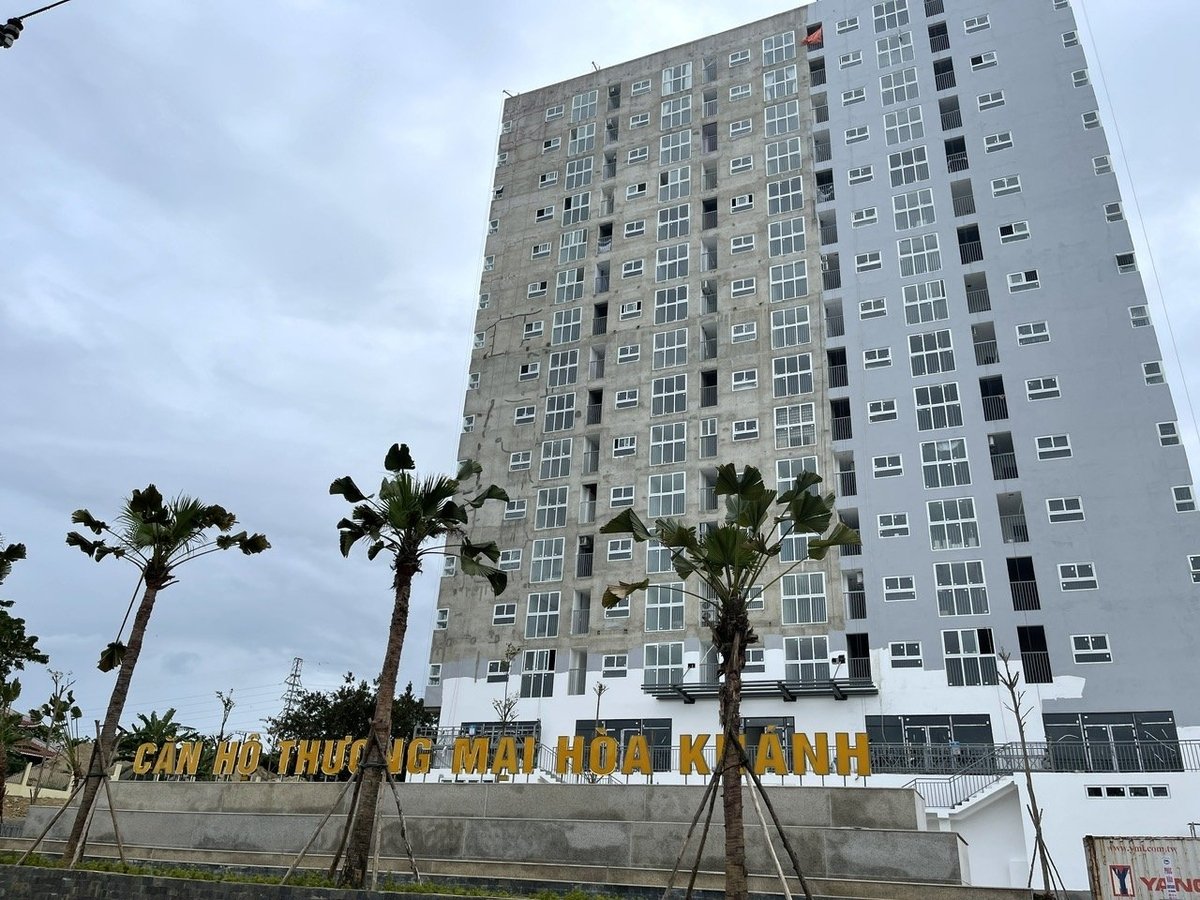
Many high-rise residential buildings in Da Nang city have begun using environmentally friendly non-fired bricks. Photo: Lan Anh.
Mr. Dang Viet Dung proposed the need to comprehensively improve economic-technical norms, establish a standardized system for evaluating material quality, and develop consumer protection policies along with financial support for pioneering enterprises in the production and application of green building materials. He also emphasized the importance of prioritizing green materials in public investment projects.
“The most important thing is to have clear policies to strengthen communication on the importance and environmental and health benefits of using green materials. We need to guide consumers on how to recognize green materials and gradually shift their habits away from using traditional, polluting materials,” Mr. Dung suggested.
The development of green buildings is not just a trend but a pressing necessity in the context of climate change and the urgent need to conserve resources. To overcome current barriers, there must be coordinated efforts among regulatory agencies, the business community, architects, construction professionals, and consumers.
When policy, technology, and public awareness advance together, green buildings and materials will no longer be a niche or difficult choice, they will become the standard in the near future.
Translated by Kieu Chi
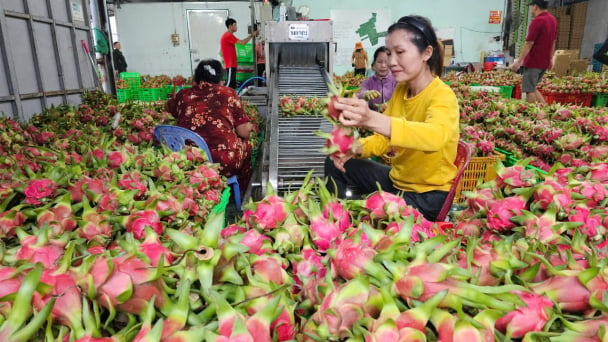
(VAN) According to the Binh Thuan Department of Industry and Trade, in the first five months of 2025, Binh Thuan's dragon fruit export turnover increased by 20.65% compared to the same period last year.
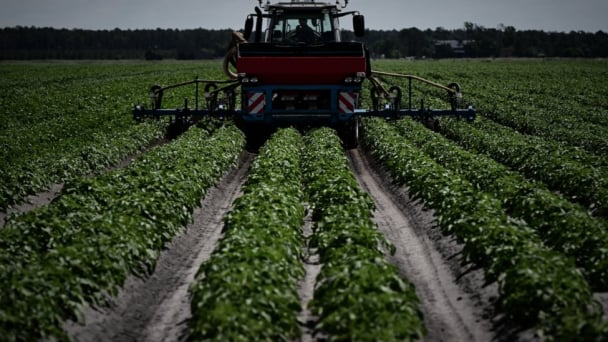
(VAN) EU countries on Thursday gave final approval to new tariffs on fertilizer imports from Russia, a move aimed at cutting off revenue that could support Moscow’s war in Ukraine, despite concerns from European farmers.
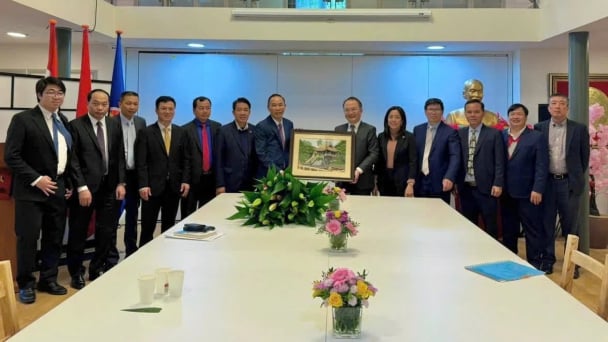
(VAN) The working delegation from the Ministry of Agriculture and Environment conducted an important trip to the Netherlands to strengthen strategic partnerships and sustainable development in the agricultural sector.

(VAN) The letter ‘A Plea from the Ocean’ not only evokes emotion but also awakens the human conscience to the responsibility of protecting life on Earth.

(VAN) The Department of Agriculture in South Africa has announced the country’s first mass vaccination of poultry to prevent local birds from contracting avian influenza.

(VAN) Establishment of the Mekong Delta Regional Agricultural Linkage Center, aiming for a closed value chain, deep processing, trading platforms, and international market connectivity.

(VAN) Gia Lai province has recently recorded 460 rare species of animals and plants, contributing to forest conservation and biodiversity planning in the region.